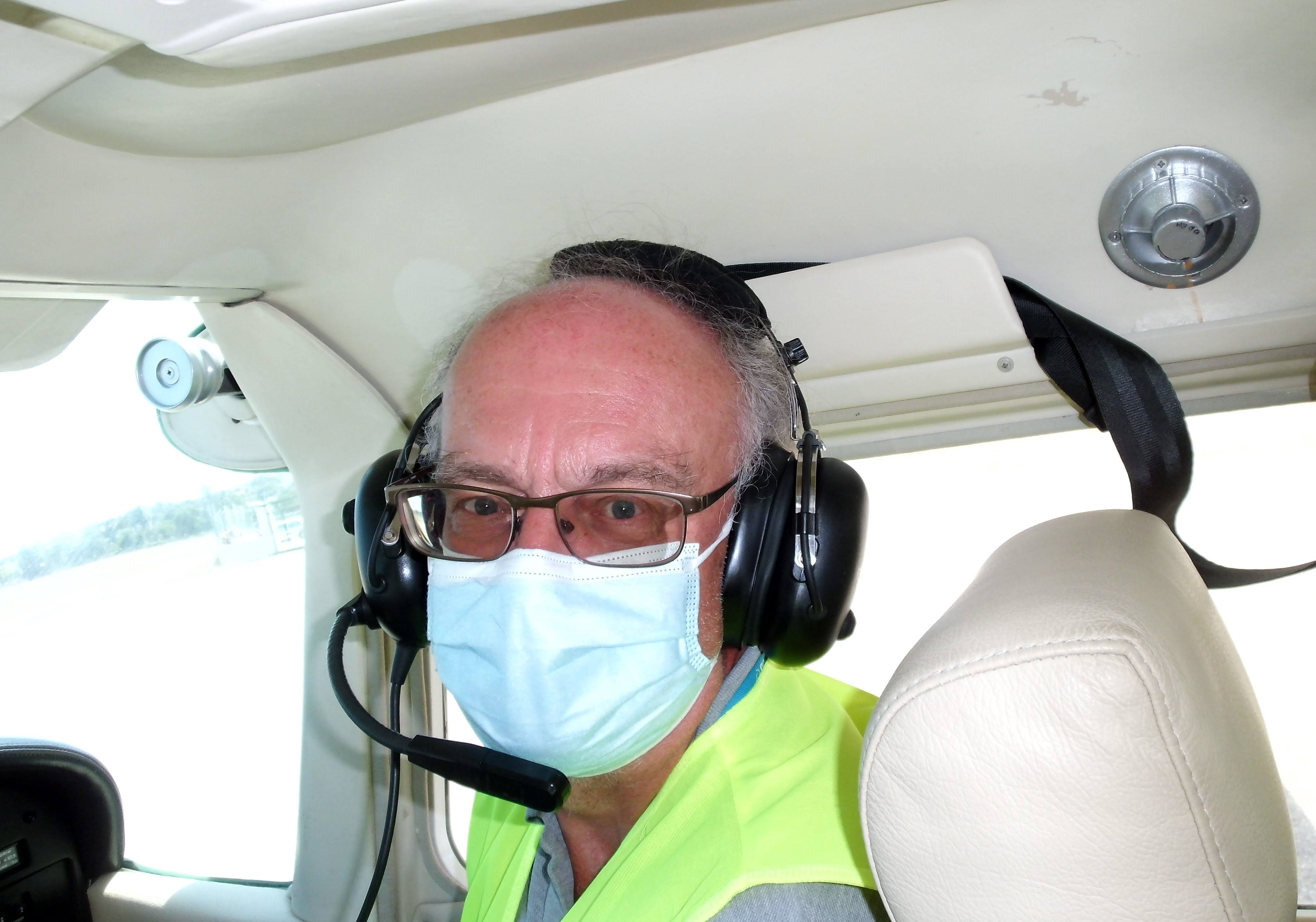|
b. 26 November 1899 in Brooklands, Cheshire; her father was director of a firm of butchers.
She said she learnt to roll her own cigarettes at the age of five; expelled from school at age fourteen (for writing 'the headmistress can go to hell' on the toilet wall), she made her first flight in 1919 from Blackpool sands.
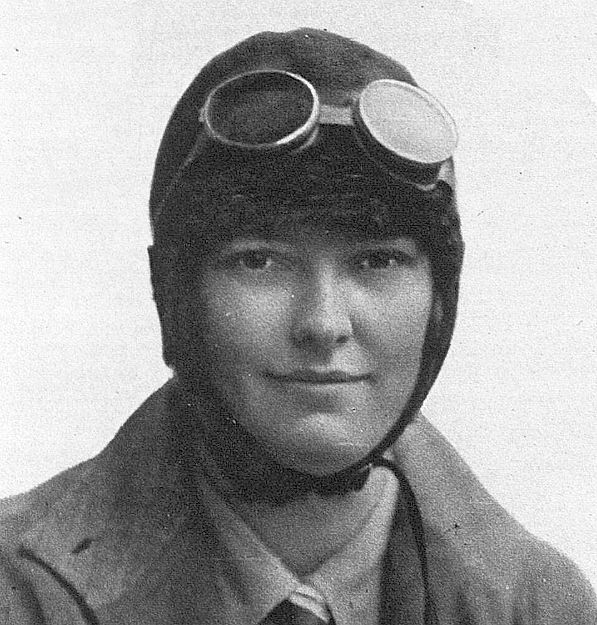 "A Well-known English Pilot" - The Sketch, 1929 "A Well-known English Pilot" - The Sketch, 1929
First woman to win the King’s Cup (in 1930); well known in Lancashire as a hockey player who kept goal for the county and toured Australia with an English team; also a pretty good golfer, sailor and tennis player.
To see her being thoroughly embarrassed by her reception back at the Lancs Aero Club after winning the King's Cup, and to hear her say “Thank you for this welcome, it’s awfully good of you and I’m awfully happy to be back again in Lancashire, at the aerodrome where Captain Brown taught me to fly…. I’m delighted to have won the race and, well, thank you all very very much, I can’t say any more”, see here
.jpg)
Her son, Tony, b. 11 December 1940 in Angelsey, is "loved and remembered by millions as slippery Adam Chance in Crossroads".
She owned:
the 1928 Avro 594 Avian III, G-EBVZ - which her father bought for £500 - in which she won the King's Cup in 1930, then
a 1930 Avro 616 Sports Avian, G-ABED.
'Win' died in July 1984 in Hove, Sussex.
And you can now get a proper biography, entitled "WINIFRED BROWN: Britain's Adventure Girl No. 1", written by King's Lynn's most famous living author, Geoff Meggitt.
See www.pitchpole.co.uk for details!
|
b 26 November 1899 in Brooklands, Cheshire; her father was director of a firm of butchers.
Learnt to fly in 1926, but in 1928 was the pilot in a horrific accident when she was duped into a publicity stunt by Walter Browning, the 'Dancing Airman', who told her a film had to be delivered urgently, and persuaded to land her Avian in a field. She was surprised to see a crowd of people, realised she wasn't going to stop in time and tried to take off again, but hit the crowd standing near a wall; a 10-year old boy was killed, several persons injured, and "many women fainted". It turned out that the 'urgent film' never existed, just an empty box. She was exonerated of any blame.
First woman to win the King’s Cup, in 1930. She became an instant star across the world, especially in her home city of Salford. Invited to the 1930 Historical Pageant at Buile Hill Park shortly after the race, crowds chanted for a speech to be made. Winifred said “This is really wonderful of you all, I am very glad to belong to Salford” which prompted one audience member to start a sing along of ‘for she’s a jolly good flyer’. The Mayor of Salford congratulated Winifred on behalf of the people, and joked “No man begrudges you your honour and you have put us all back in our place”.
Before the Race, she was "well known in Lancashire as a hockey player who keeps goal for the county and has toured Australia with an English team".
One of the guests of honour at the Ladies Night dinner of the Press Club in December 1930; the chairman reckoned that "Women had forced their way into the columns of the Press, and now they seemed to be on the way to monopolizing them".
She was still an active ice hockey player in 1933, flying herself from Manchester to London to take part in the Sheridan Cup, where she kept goal for the "Queen's Ladies". She was also a pretty good golfer; she and her partner Mrs Brooks got to the last 8 of the Ladies' Northern Foursomes at Leeds in 1938.
Later sailed from North Wales to Spitsbergen in her 45-foot yawl Perula. During WWII, Chief Coxswain in the Marine Department of Saunders Roe.
In 1940 she gave birth to a son, Anthony, after it was revealed she had "secretly married her long time adventure companion Ron Adams" (although I'm not sure what was so secret about it).
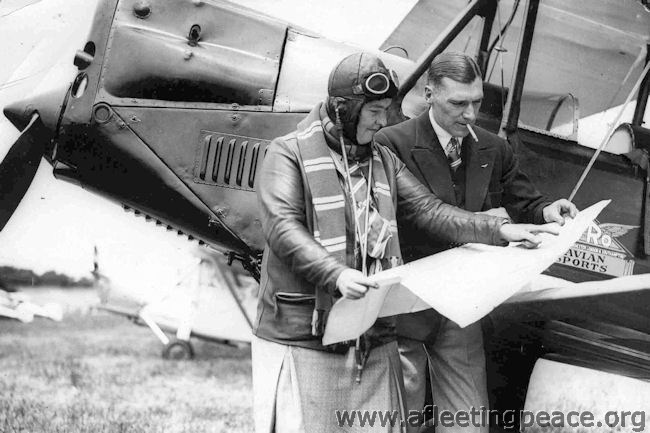
She attended the 1950 King's Cup Race, but was "horrified ... I thought sadly of Bert Hinkler, Cobham, Barnard, Hubert Broad and Wally Hope."
'Win' died in July 1984 in Hove, Sussex.
|
|
Winifred Brown was born [26 November] 1899 in Brooklands, Cheshire. She moved to Salford at an early age and went on to attend ‘Bella Vista’, Broughton High School for Girls. Winifred’s father, Mr Sawley Brown, was director of Messrs. James S. Brown & Sons, a firm of butchers.
Winifred was a natural sportswoman, and achieved great success in flying when she became the first woman to join the Lancashire Aero Club in 1926 and the first woman in the region to qualify for a pilot’s licence in April 1927. By March 1928 Winifred was recruited to the rank of a private owner member, and that same year she won the club’s Rodman Trophy.
By the 1930 King’s Cup Air Race, a 750mile race around England, Winifred Brown was an experienced pilot, although she had never flown such a long distance. In the pre-race articles that appeared in Flight magazine, on June 13 1930,Winifred’s entry was not taken seriously, mentioned with six other pilots of the ‘fairer sex’ only briefly. Winifred flew an Avro Avian with a Cirrus III engine with her co-pilot, and later husband, John Ron Adams. The Air Race was full of excitement, after starting the race at Hanworth, London. By the time she reached Barton Aerodrome, Winifred was in third position and the large crowds roared with excitement. The final finish was at Newcastle, by which time she’d run away with the lead. There was a dramatic finish when Winifred spotted a large aircraft behind them. Believing it to be a competitor and determined not to be beaten to the finish line, the Avian was pushed to speeds of 160 miles per hour! Afterwards a mechanic told the Salford Reporter that this speed ‘was courting disaster’. By pushing her Avian to the limits Winifred beat her male contemporaries, including Flight Lieutenant Waghorn, winner of the prestigious Schneider Cup.
As the first woman to win the King’s Cup, Winifred became an instant star across the world, especially in her home city of Salford. Invited to the 1930 Historical Pageant at Buile Hill Park shortly after the race, crowds chanted for a speech to be made. Winifred said “This is really wonderful of you all, I am very glad to belong to Salford” which prompted one audience member to start a sing along of ‘for she’s a jolly good flyer’. The Mayor of Salford, Samuel Finburgh, congratulated Winifred on behalf of the people, and joked “No man begrudges you your honour and you have put us all back in our place”(Salford Reporter 11 July 1930).
Winifred’s later adventures in the 1930s went beyond Britain, this time sailing rather than flying from North Wales to Spitsbergen in her 45-foot yawl Perula. During the Second World War, Winifred worked as Chief Coxswain in the Marine Department of Saunders Roe, the flying boat constructors in Beaumaris. Winifred worked with a fleet of R.A.F. craft with all-male crews, she met Catalinas from Bermuda, landed and embarked crews and towed aircraft.
In 1940 she gave birth to a son, Anthony Sawley Adams, after it was revealed she had secretly married her long time adventure companion Ron Adams.
With thanks to John B. Coxon and Tony Adams
http://www.salford.gov.uk/d/LTL26v3final.pdf
|
|
In 1950, Winnie wrote this lovely article for 'Flight':
POST-WAR AIR RACING - is Something Missing?
A Pre-war Winner Asks Some Pertinent Questions
By WINIFRED BROWN
As something "rather different" in post-war air races, the Daily Express "International South Coast Race" on September 16th seems likely to be watched with interest, especially by "the forgotten pioneers of long ago" - in which category a South African magazine recently included me!
For some time we have been asking ourselves " What has gone wrong - air racing or we old pilots?" Has the sport really lost its thrill and popularity, or have we merely become the club bores who stand at a bar counter and say, between beers, "Things aren't what they were"?
I have been thinking about these questions for several weeks - ever since, in fact, I set off, in excited anticipation and an Austin Seven - to see this year's King's Cup Race. The Wolverhampton Aero Club had very kindly invited me - "Just to show them you are still in the land of the living, Win?" chuckled John Bill over the telephone, for the previous year the B.B.C. had coupled my name with the type of wings that go with a harp! It was 20 years since I had won the King's Cup and 19 years since I have even seen an air race. I had a shock coming to me!
When asked if I were flying, I laughed and replied ungrammatically, "What, me! I'm used to 105 m.p.h.,not 501." And as my little car proceeded at a sedate 40m.p.h. my mind went back 20 years. Who would be there? Tommy Rose, Jimmy Jeffs, Robin Cazalet, "Lamps"? What fun it would be to see them all again!
On arrival at the Star and Garter I rushed to look at the hotel register... I didn't recognize a single name! They must still be in the bar... we had always lingered... they would come later; so, casting respectability to the wind, I ignored my married name and wrote " Win Brown and son."
That night there was a R.A.F.A. dance - to meet the "famous pilots"! The dancing was popular enough, but we were not; when we went on the stage the room practically emptied - the dancers had probably done far more flying than we had!
Still there was a nice bar upstairs, and I talked with interest to the 1950 pilots. "Do you have flying pageants these days?" I asked a young man. For a moment he looked puzzled, then replied "Yes, but we call them 'air rallies'". When I flew in 1930 we had a 750-mile course. Do you like these short circuits? " "Oh yes! It's a better test of flying—none of this navigation stuff enters into it. '
I thought sadly of Bert Hinkler, Cobham, Barnard, Hubert Broad and Wally Hope. That night I went to bed at 11.30 - if there was a party I didn't find it!
Next day I got to the airfield early. I looked and blinked. Was I back in 1930? Where were these modern super aircraft? I felt I could have got into almost any one of the competing machines, and flown as I used to do; but my son, aged nine, was thrilled as I took him round. It was then the Press descended on us - "That's right,sonny - smile up at your grannie!'' My expression was such that the pictures did not appear, but fortunately the bar tent opened and Jack Cantrill, who had given me my first flying lesson in 1925, assisted me to recover.
Then a few old faces appeared, but we all sadly agreed that "things ain't wot they was." As for the race itself - well, it sounded fine on the radio but, with no rudeness intended, I would not describe Hawk Trainers and Austers "screaming" round anything. Princess Margaret's Hurricane gave us a thrill and it was beautifully handled by Townsend, but the two Spits that I hadrelied on to impress my son promptly took off and got lost - so perhaps there is something in this ''navigation stuff" after all! One we never saw again, but the other obligingly returned, much to the delight of my small son, and the spectators - but probably less so to the owner of the aircraft whose tail it knocked clean off.
But what horrifies me about this race - and, for that matter, present-day air racing in general - is that the slide-rule experts, secreted with Charles Gardiner in glass towers, seem reasonably able to forecast the result after one lap! In the King's Cup they were about 60 yards out, and in the two Newcastle races a few weeks later it seems from Flight's report that the ultimate winners appeared unbeatable almost from the outset.
Where is the sport, the fight, the fun of the thing? It seems to me that if you haven't beaten the handicappers before you start you might just as well stay in the bar. On a long circuit a race was never lost until it was won. Engines could pack up in sight of home; flimsy racing wheels could buckle on a careless landing; you might run into cloud or fog and fail to find that white cross in the field; but no matter what happened there was always home - the others might be faring worse. To beat the handicappers was a decided help, but only the beginning of a long story.
After this year's King's Cup I scanned the newspapers, but gone were the old headlines. The little publicity there was went to the tragic accident rather than to Edward Day. I wondered vaguely if a victory for Princess Margaret would have received more publicity, but I doubt it - my papers were full of the footballers who received a free trip to South America, £25 each and the offer of some £175 a month, and returned highly incensed because a hair-cut cost 7s and the people carried rifles!
So good for British prestige, and obviously so much more important than a few men and women who risk their neck for British aviation, a possible prize of £150 and a replica of the Cup. I did risk my neck for about £1,000 in 1930, and in those days the cup was won outright.
What has caused this lack of interest on the part of the Press and public? Has flying become too common? But, for that matter, what could be more common than football and race-horses, sports which still hold the crowds? Perhaps it is the effect of the war - petrol only just off the ration, money short, private owners and aero clubs unable to afford the high-powered aircraft we now scarcely glance at as they do, literally, scream through the sky.
Presumably with the industry in a transition stage pending large-scale production of military jet aircraft, and because of present-day-economic conditions, the trade cannot give the support it did to racing. For this reason one must admire the present-day private owner. Gone are the days of dual at £1 an hour, free petrol, a loaned engine, and perhaps even a free aircraft. To-day one can hardly afford to patronize the bar tent!
My small son was all for presenting the King's Cup to Cole and his Comper Swift. ''That little one has done best, Win - t has gone all that way against the big ones." Out of the mouths of babes and sucklings.... Would the old Circuit of Britain again arouse public interest? Personally, I think it would. Some 15,000 people were present at Wolverhampton this year, but in 1930 similar, if not larger, crowds assembled at each of the controls at London, Bristol, Manchester, Newcastle and Hull, not to mention the turning-points at Southampton, Birmingham,Liverpool, Leeds and Leicester. The King's Cup race belonged to the country as a whole and not just to one area.
But there is another point, and an important one. The rot started to set in way back in 1931, when new King's Cup regulations caused the entries to drop from 101 to 41. Restrictions! They are ruining our country to-day. It seems to be that the South Coast Race is, in some degree, a return to old conditions, and that if it is successful it may influence next year's King's Cup. I hope so, for personally I would like to see a grand and glorious free for all - Maggies to Meteors on the old circuit of Britain.
''What else would you do, Win?" asked one of the old timers as we stood discussing the matter in the bar. "I'd have bookies under nice, coloured umbrellas - but I'd keep them away from the slide-rule experts!" And I suppose you'd have better prizes and bigger bar tents? "Sure!" I laughed. "Well," said an old pilot, slowly, "something has got to be done; the King's Cup to-day is no different to the little races we used to take part in every Saturday at the old pageants." "Rallies, dear, rallies," I corrected.
So we all had another beer, and my small son, waiting outside, began to take a dim view of aviation.
|
|
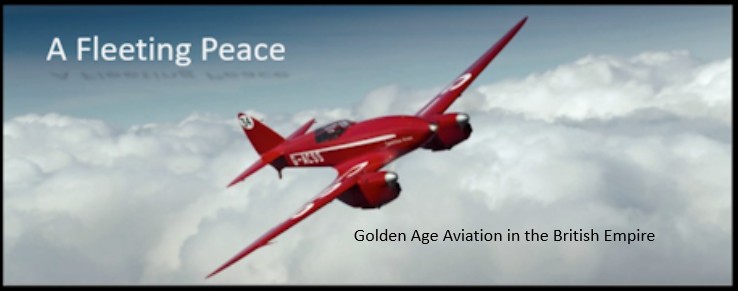
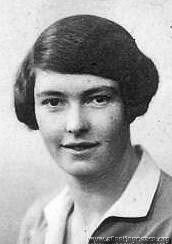 photo: 1927, aged 28
photo: 1927, aged 28 .jpg)
 "A Well-known English Pilot" - The Sketch, 1929
"A Well-known English Pilot" - The Sketch, 1929.jpg)

